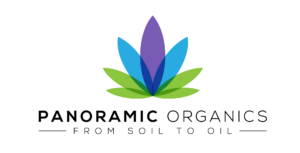Difference Between Broad and Full Spectrum
- bryan9790
- Aug 27, 2021
- 2 min read

Broad-Spectrum vs. Full-Spectrum: What’s the Difference?
If you’re a CBD enthusiast, no doubt you’ve heard of both Broad-Spectrum and Full-Spectrum. They sound similar — so what’s the difference? Let’s break it down.
Full-Spectrum CBD
Unlike CBD Isolate, which contains only CBD and no other compounds found in the cannabis plant, Full-Spectrum CBD does contain other parts of the plant — including trace amounts of THC. Legally, Full-Spectrum products will always have less than 0.3% THC.
Broad-Spectrum CBD
Whereas Full-Spectrum includes THC, Broad-Spectrum does not. But it does also contain other components from the cannabis plant.
The Benefits
With both Full-Spectrum and Broad-Spectrum CBD, you’re enjoying the benefits of multiple parts of the cannabis plant all working together. Studies show that CBD performs best alongside flavonoids and terpenes, which offer benefits beyond CBD alone.
But because Full-Spectrum also includes trace levels of THC, we find that it edges out Broad-Spectrum in terms of results. With Full-Spectrum CBD, you get the “entourage effect” — that is, when you have all these bits working together (cannabinoids, THC, flavonoids, and terpenes) you enjoy the greatest CBD benefits.
The Drawbacks
When it comes to Full-Spectrum, there’s a minor risk of feeling high due to the presence of THC — but this is extremely rare. You’d have to take a big dose of THC-heavy CBD in order to feel any semblance of high.
At Panoramic Organics, we test and monitor cannabinoid levels throughout the growing process to ensure healthy production and compliance with the state limit of 0.3% THC. In short, high-quality CBD like ours means no high.
When push comes to shove, studies show (and we agree!) that Full-Spectrum CBD simply gives better benefits and increases relief from pain, inflammation, and anxiety. That’s why we are all-in on Full-Spectrum.







Comments